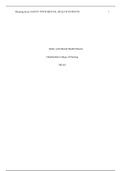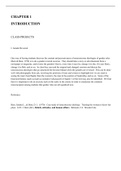Lecture notes
PASSING OF PROPERTY/RISK - NOTES & Tutorial Answers // 1st class // colour-co-ordinated.
- Module
- Commercial & Agency Law
- Institution
- Queen Mary, University Of London (QMUL)
PASSING OF PROPERTY & RISK 2019 QUEEN MARY : FIRST CLASS COMMERCIAL LAW NOTES - 79.3 John Yelland Commercial Law Prize AWARD.
[Show more]












